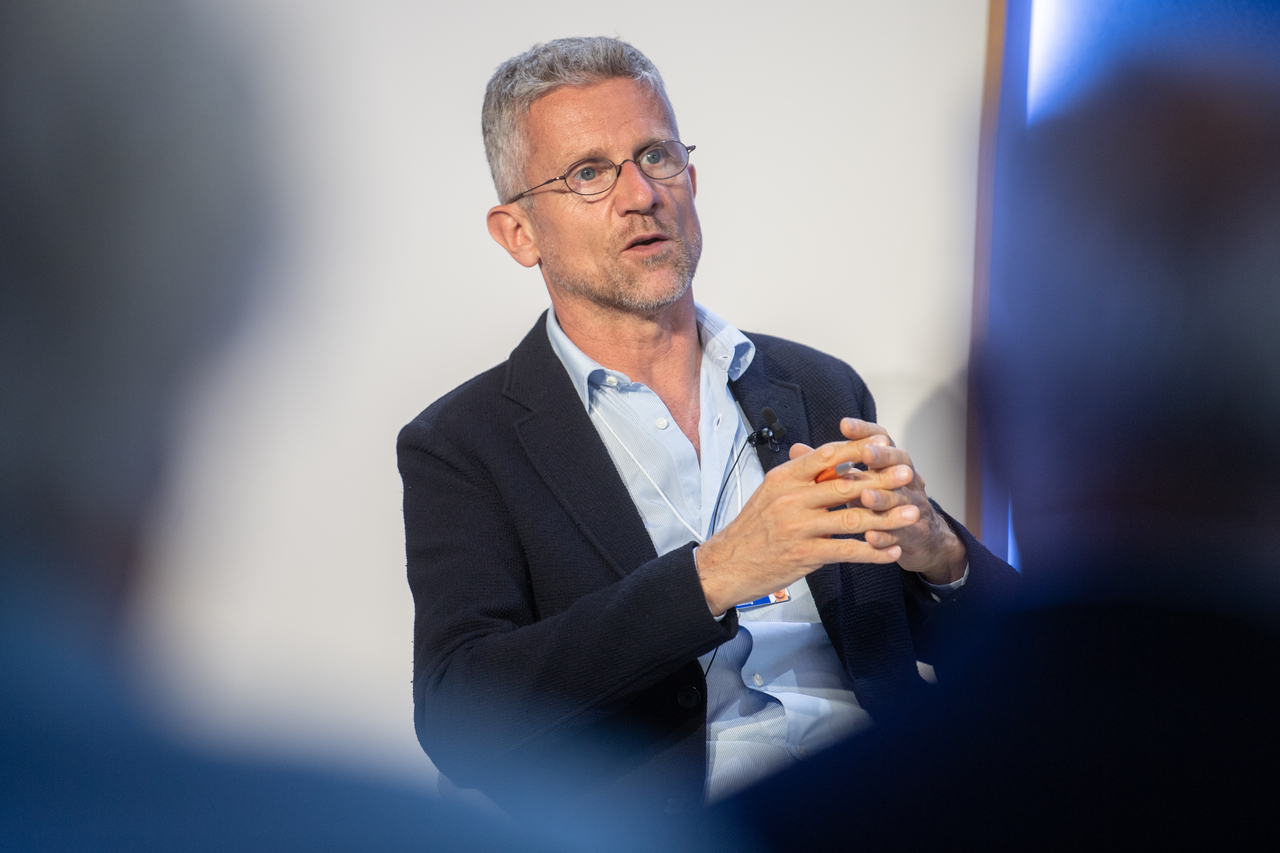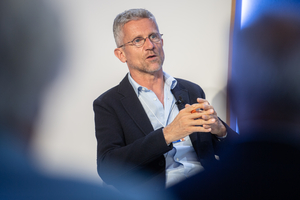Italian-born architect envisions a world where cities are not built once, but continuously reborn through data and design
 Carlo Ratti Associati Director Carlo Ratti (Mattias Nutt)
Carlo Ratti Associati Director Carlo Ratti (Mattias Nutt) BARCELONA, Spain — As cities worldwide race to reinvent themselves with sensors, artificial intelligence and green infrastructure, one country stands out as a real-world laboratory for the future of urban living: South Korea.
At the Smart City Expo World Congress in Barcelona, Italian architect and MIT professor Carlo Ratti told The Korea Herald why he sees Seoul as a “living testbed” for how technology, transparency and citizen participation can reshape cities.
Ratti, who leads the MIT Senseable City Lab and co-founded the design and innovation firm Carlo Ratti Associati, called Korea an ideal site to experiment with what he terms “learning infrastructures” — systems that sense, adapt and evolve alongside their citizens as the country pushes ahead with smart-building innovations and climate-responsive urban strategies.
“We should stop building on greenfield, but we should transform what we already have,” Ratti said, drawing parallels between Korea and other aging societies such as Italy, Japan and China.
“The big challenge is starting from our cities and transforming, adapting again to a population which is not going to grow, but most likely is going to decrease,” he added.
From concrete to ‘living infrastructure’
Ratti challenges the traditional notion of infrastructure as rigid and unchanging. He argues that the fusion of embedded sensors, fiber optics and digital networks is enabling a new kind of urban fabric — one that is dynamic and alive.
“We always think about infrastructure as something permanent, but the reality is that infrastructure today can become like a living thing,” he said.
“Through sensors and new technologies, we can make sure that infrastructure seems alive — not just concrete or steel.”
While the technology itself can be deployed anywhere, Ratti emphasized that scaling such a system depends heavily on governance.
“I see much interest from infrastructure managed by big companies, because the business model is very easy,” he noted.
“The key question is not the type of infrastructure but who owns it and what model allows it to be monitored and adapted effectively.”
Data in city: Trust through transparency
With data collection at the heart of any smart infrastructure, privacy concerns are inevitable — particularly in countries like Korea, where digital sensitivity is high.
“We need to be considerate and analyze privacy protocols, but if we do it right, we can actually get a lot of very interesting data to understand the city without infringing on people’s privacy,” Ratti said.
His proposed solution is radical transparency.
“The best way is to do whatever you do in a transparent way, share the data and involve citizens. It’s almost like, you know, a glass box,” he said. “If it’s aggregated, anonymized — then it’s fine.”
Pointing to Europe’s General Data Protection Regulation as a model, he emphasized that civic participation and open processes are key to building public trust in data-powered cities.
 Carlo Ratti Associati Director Carlo Ratti speaks with The Korea Herald on the sidelines of the Smart City Expo World Congress held at Fira Barcelona Gran Via, in Barcelona on Tuesday. (Jie Ye-eun/The Korea Herald)
Carlo Ratti Associati Director Carlo Ratti speaks with The Korea Herald on the sidelines of the Smart City Expo World Congress held at Fira Barcelona Gran Via, in Barcelona on Tuesday. (Jie Ye-eun/The Korea Herald) Seoul, a global testing ground
Ratti spoke with particular enthusiasm about Seoul as a global case study for AI-powered urbanism. Its scale, density and tech-forward culture make it, in his words, “a unique testbed” for smart city evolution.
“Scale and speed are usually the best way to try something and see how to keep on modifying and improving,” he said. “That’s why I’m so excited to be part of the Seoul initiative on AI. Seoul is a unique case study.”
Although urban policy may lag behind technological capabilities, Ratti argued that civic engagement can serve as the connective tissue between innovation and implementation.
“Technology moves very fast and sometimes cities are a bit slower, but if you share things with citizens, citizens might be the ones to help control the system as it evolves.”
Blending AI with urban wellness
One of Ratti’s latest initiatives in Korea is the “Nature That Heals, Seoul” project, a collaboration that merges AI with urban visual analysis to explore the relationship between green space, wellness and quality of life.
The project, part of his broader research on Urban Visual Intelligence at MIT and Carlo Ratti Associati, uses computer vision and image data to assess how trees, parks and other elements of urban nature contribute to citizens’ well-being.
“One of the things we want to do in Seoul is what we call Urban Visual Intelligence,” he said. “You can look at trees, you can look at people, you can look at the city and then understand better how it works and how it can be improved.”
He draws philosophical inspiration from 19th-century Barcelona planner Ildefons Cerda, who envisioned using empirical data to understand the human experience of urban life — a dream Ratti believes is finally within reach.
“For the first time, that moment has arrived,” he said. “Through data, we can look not only at the physical city but at all the activities happening in it.”
yeeun@heraldcorp.com
